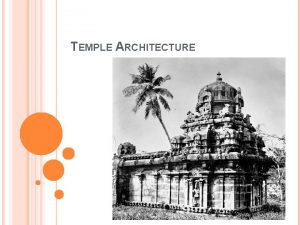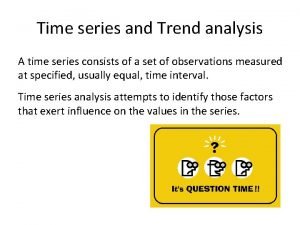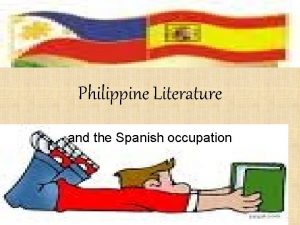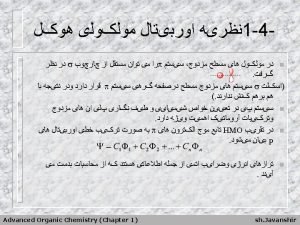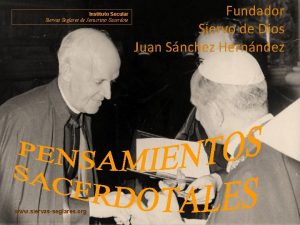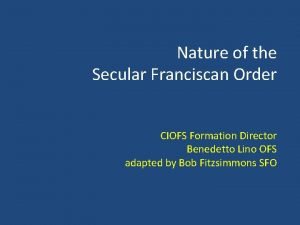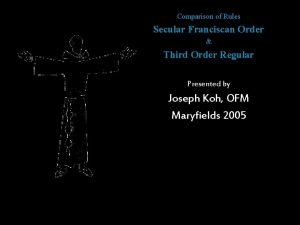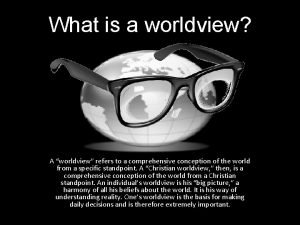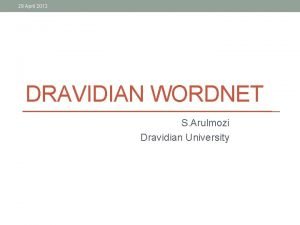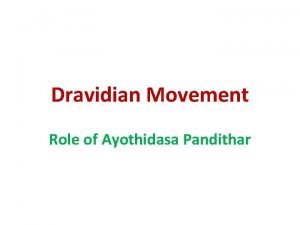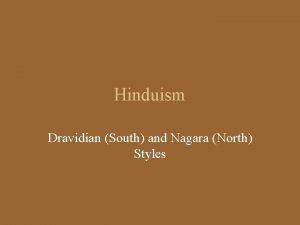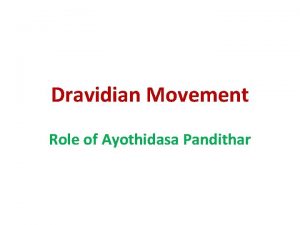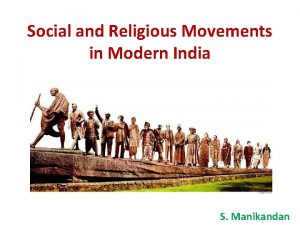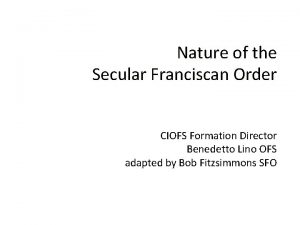Secular Movements of Modern India Dravidian Movements Nature






















- Slides: 22

Secular Movements of Modern India Dravidian Movements

Nature of Backward Class Movements • The activities of the Christian missionaries to win converts among lower castes and the various socioreligious reform movement among the Hindus further contributed to the growth of awareness among the lower caste against Brahmin’s domination and the oppressive nature of the caste system. • This led to the emergence of various backward class movements in early 20 th century. • The British Government also lent support to these movements in order to weaken the freedom struggle. • Some of the important backward class movement which grew in early 20 th century were: • 1. Dravidian Movement • 2. SNDP Movement

Circumstances for the creation of Dravidian Movement • With the spread of Christianity and the western education, the non Brahmin in the Madras presidency region developed a new awareness as a result of which resentment started growing among them against the domination by Brahmin and other higher castes in profession as well as in politics, especially the Congress Party. • They believed that, if they had to make successful careers, the domination of Brahmins in professional and political life had to be first overthrown.

Cont… • By 1914 this conflict between the emerging non. Brahmin urban middle class and the establishment of mostly Brahmin middle class and upper class took a sharp turn. • The non-Brahmin caste uniting themselves and the Non-Brahmin Manifesto published in 1916 was followed by the formation of South Indian Association in 1917. • After the Montague Chelmsford Reforms ‘South. Indian Association’ was converted into Justice Party to counter the political influence of the Congress.

Arrival of Periyar • However the Justice Party was a party of urban educated professional middle class elite in nature and therefore failed to build a mass base. • Soon after, the self-respect movement was founded in 1925 by E. V. Ramaswami, popularly known as Thanthai Periyar.

Dravidian Ideology • The self-respect movement was based on the Dravidian ideology to save the non-Brahmin from the tyranny of Brahmin who were considered Aryans. • The self-respect movement aimed at removing the control of Brahmin from the social and political level and sought to wean the people away from the puranic ritualistic Hinduism necessitating the presence of Brahmin priest.

Creation of Dravida Kazhaham • It considered the Brahmin as the symbol of all exploitation. • This movement was successful in appealing to the masses and acquired a mass following. • Finally the self-respect movement and Justice Party were merged in 1944 to from Dravida Kazhaham headed by Periyar. • It adopted a militant mass agitational strategy and advocated an egalitarian ideology condemning the caste system.

Formation of Dravida Munnetra Kazhaham • Later on in 1949, due to difference between the Periyar and C. N. Annadurai who led the younger section in the Dravida Kazhaham, there was a split leading to the formation of Dravida Munnetra Kazhaham. • The majority of the rank and file of D. K. joined the DMK. Initially the support base of DMK consisted of the lower middle class, students, lower castes like Nadars, Marwars and Adi Dravidians and unemployed youth, etc. • Cinema was one of the effective media which was used by DMK to propagate its ideology and win a mass base.

Transformation • A consequences of the DMK was the decline in the domination of Brahmins in Tamil Nadu, a new sense of release and freedom among the lower castes. • However, later on as DMK tried to capture power, it gradually abandoned its reformist zeal and even the demand for creation of a separate Dravidian Nadu and acquired a character of one of the mainstream political parties with a rational support base.

Dravidian Movement Role of Ayothee Dasa Pandithar

Ayothee Dasa Pandithar Dalit Consciousness in South India • The basic components of Dalit consciousness that emerged during the late 19 th and early 20 th century in South India. • The features of Dalit consciousness that was represented by the Dalit thinker, Ayothee Dasa Pandithar (1845 -1914), became popular among the depressed people. • His writings were discovered and published very recently (Volumes I & II in 1999 and Volume III in 2003) by their editor G. Aloysious in three volumes. • Interestingly, Ayothee Dasa Pandithar lived in an age just immediately prior to Ambedkar and it seems that he has come to associate the Dalit consciousness and revival of Buddhism earlier to Ambedkar in south India.

Cont… • Knowledge about Ayothee Dasa Pandithar challenges the existing view that the Justice Party of the South Indian non. Brahmins is the pioneer movement in popularizing themes of anti-Brahmanism, atheism, critique of Hinduism and caste system. • Ayothee Dasa’s construction of Dalit consciousness in Tamil context at the wake of 20 th century is pertinent to understand the appearance of Marxist ideology in Tamil region because M. Singaravelu (1860 -1946), celebrated as the first communist of South India, started his political career along with Ayothee Dasa Pandithar, too participated in the Buddhist revival in South India and entered into certain debates with Ayothee Dasa to get evolved into a communist after the demise of the latter. • He participated in the Round Table Conferences along with B. R. Ambedkar.

Shri Narayana Dharma Paripalanam SNDP Movement

Shri Narayana Dharma Paripalana (SNDP) Movement • The untouchable Ezhavas or Iravas of Kerala clustered around the religious leader Shri Narayana Guru (1855 -1928), who formed the Sri Narayana Dharma Paripalana Yogam (SNDPY) in 1902 -3. • It organized some temple entry rights movements.

Shri Narayana Guru

Historical Background • This movement was based on the approach of reinterpreting Hindu religion in search of selfdetermination. • The Sri Narayana Dharam Paripalana Movement was the movement for the propagation of Sri Narayana Guru Swamy's philosophy among the Izhavas (toddy tappars) of Kerala. • Until 1935 the Izhavas belonged to the Scheduled Caste category. • They were considered to be unapproachable by the other castes.

Cont… • Izhavas that formed about 26% of the Kerala's total population suffered from many religious, political and economic disabilities. • Around the turn of the century a charismatic leader Sri Narayan Guru Swamy gave them a new religion of one God and one caste which transformed their life styles and outlook. • He established a set of religious institutions parallel to that of the variety of Brahmanical Hinduism. • This helped Izhavas both to gain self-respect and to adopt a protest ideology to challenge the religious, economic, educational and political supremacy the upper castes.

Causes for the Movement • This movement was lunched among the Izhavas of Keral by their leader Narayan Guru. • Traditionally, Izhavas were an untouchable castes of Toddy Trappers e. g. they had to stay away thirty four feet from the Namboodhari Brahmins. • They suffered from many other disabilities both social and ritual. • They were denied access to Hindu temples or to the bathing tank of Hindus. • Their women were not allowed to cover their breast or to wear any footwear, nor could they build good house.

Cont… • In the later part of the 19 th century with the spread of modern humanistic and secular ideas and also the spread of egalitarian -ideas through Christianity, Izhavas came to view their situation as one of the deprivation and exploitation. • Under the charismatic leadership of Sri Narayan Guru they rejected Brahminical domination and development a new interpretation of Hinduism. • Next according to MSA Rao, they adopted the strategy of withdrawal and self organisation.

Ideology • The new ideology was based on the principle of self-respect, honour and worth of individual. • It was an ideology of protest against the Brahminical values system of hierarchy and pollution. • S. N. Guru established a parallel source of legitimacy by establishing new institutions like temple priest, monk and monasteries.

Achievements • Later T. V. Madhavan led the Vaikum Temple Road Entry Movement in 1927, under the patronage of Mahatma Gandhi. • After the two years of sustained Satyagraha the Izhavas were granted the right to use the road which ran near the Vaikum Temple which was woned by upper caste. • This was a historic victory against orthodox ideas of pollution. • Thus, the leaders of the movement were able to achieve for their followers all the basic rights in the field of religion, education, employment and politics.

Cont… • The SNDP movement represented one of the most successful attempts of the untouchable castes to alter the traditional balance of power besides improving their own positions. • It also demonstrated that it was possible to remain within the fold of Hinduism and yet escape from the stigma of untouchability. • The new awareness arose among Izhavas tribes. • The movement motivated them to take to modern education which in the long run enabled them to aces to the modern occupation and professions which carried high rewards in terms of prestige and wealth. • Thus Izhavas as a community successfully raised their status in society by the contribution of SNDP movement.
 Dravidian pyramid temples
Dravidian pyramid temples Is an axial movement.
Is an axial movement. Secular simple definition
Secular simple definition Irregular variation in time series example
Irregular variation in time series example Franciscan supplement liturgy of the hours
Franciscan supplement liturgy of the hours Renaissance thinkers stress secular ideas.
Renaissance thinkers stress secular ideas. Transient equilibrium equation
Transient equilibrium equation Duplo philippines history
Duplo philippines history Frost musulin diagram
Frost musulin diagram Radioactivity formula
Radioactivity formula Siervas seglares de jesucristo sacerdote
Siervas seglares de jesucristo sacerdote What does secular mean
What does secular mean Secular paganism
Secular paganism Secular music
Secular music Secular franciscan order formation
Secular franciscan order formation Confucius--the secular as sacred
Confucius--the secular as sacred Secular arguments against abortion
Secular arguments against abortion Genesis 1-1
Genesis 1-1 Third order franciscan rule
Third order franciscan rule Secular
Secular Franciscan secular institute
Franciscan secular institute Secular music
Secular music Key events of the renaissance
Key events of the renaissance
